Wife of Declaration of Independence Signer Roger Sherman
Roger Sherman
Portrait by Ralph Earle
Sherman did not pose for Earle – he was incapable of “posing” for anyone – he quite literally “sat” for him, and the result is one of the most striking portraits of the age.
Rebecca Minot Prescott (1742 – 1813) was born in 1742. She was the daughter of Benjamin and Rebecca Minot Prescott from Salem, Massachusetts, and the niece of Roger Sherman’s brother, Reverend Josiah Sherman.
Roger Sherman was born at Newton, Massachusetts, on April 19, 1721, to a poor farming family. In 1723, he moved with his parents to what was then a frontier town, Stoughton, which was seventeen miles south of Boston. Roger’s education was very limited, but he had access to his father’s library, a good one by the standards of the day, and when Roger was about thirteen years old the town built a grammar school, which he attended for a time. Roger was first cousin twice removed of Eli Whitney, inventor of the cotton gin.
Roger was blessed with an active thirst for learning, and Stoughton was fortunate to have a parish Minister by the name of Reverend Samuel Danbar, who had been educated at Harvard. The reverend took young Roger under his wing, and helped him acquire some knowledge of mathematics, sciences, literature, and philosophy.
At Stoughton, Roger’s father had carved out a farm in the wilderness. To help earn additional money, his father also made shoes, and young Roger was taught the shoemaking trade at an early age. As a boy, he read widely in his spare time, but he spent most of his waking hours helping his father with farming chores and making shoes.
After his father’s death in 1743, Roger Sherman moved with his mother and siblings to New Milford, Connecticut, where an elder brother was living. For a time, Roger continued to farm and make shoes. Then, in partnership with his brother, Roger opened the town’s first store, and rapidly became one of the town’s leading citizens.
He also used his mathematical skills and studied to become a surveyor. In 1745, he was appointed surveyor of New Haven County, Connecticut, and served in this capacity until 1758. During that time, he bought a considerable amount of land, and became active in the affairs of New Milford, serving as juryman, town clerk, church deacon, school committeeman, and agent to the Assembly of Town business.
Although he had no formal legal training, Sherman was urged to read for the bar by a local lawyer, and he was accepted to the Bar of Litchfield, Connecticut, in 1754. He was elected to represent New Milford in the Connecticut General Assembly from 1755 to 1758 and from 1760 to 1761.
Sherman also began providing astronomical calculations for almanacs in 1748. Since New Milford had no newspaper and reading material was hard to come by, Sherman wrote and published a popular Almanac of his own from 1750 to 1761. By the age of 40, he had become a very successful landowner and businessman, while integrating himself into the social and political fabric of New England.
In 1761, Sherman abandoned his law practice, and moved to New Haven, Connecticut, which was his home until his death. There, he managed two stores, one that catered to Yale students and another in nearby Wallingford. He also became a friend and benefactor of Yale College, and served as its treasurer from 1765 to 1776, and was later awarded an honorary Master of Arts degree.
Roger Sherman married Rebecca Minot Prescott on May 12, 1763, three years after the death of his first wife, Elizabeth Hartwell, who had died during childbirth. Rebecca became the mother of eight children: Rebecca, Elizabeth, Roger, Mehitable, Mehitable, Oliver, Martha, and Sarah.
Although he opposed extremism, Sherman resented the British Parliament’s interference in colonial affairs and enlisted early in the Patriot cause. He supported nonimportation measures and advocated the boycott of New York merchants who did not participate in them. He was also the leader of the New Haven Committee of Correspondence, an extralegal political association that was part of a communications network among Patriot leaders in all thirteen colonies.
Meanwhile, Sherman’s political career had blossomed. He held a number of colonial and state offices throughout the Revolutionary period. He rose from Justice of the Peace in 1762, to Judge of the Court of Common Pleas in 1765, and Associate Justice of the Connecticut Superior Court from 1766 to 1789, where he was annually reappointed for 23 years. After 1766, Sherman was elected to both houses of the Connecticut General Assembly numerous times, and served there until 1785. By 1772, Sherman was prosperous enough to retire from business and devote himself full time to public office.
At the start of the Revolutionary War in 1775, Sherman was appointed to the Connecticut Governor’s Council of Safety, and served as commissary to the Connecticut Troops. His experience in the General Assembly prepared him for the many legislative duties that he performed during the Revolutionary War, especially in the matters of military finance and supplies.
In 1776, he worked so earnestly hard that he spoke of retirement in a letter to Governor Jonathan Trumbull. It was at this time that John Adams spoke of Sherman as “an old Puritan, as honest as an angel, and as firm in the cause of Americium Independence as Mt. Atlas.”
Sherman was a longtime and influential member of the Continental Congress from 1774 to 1781, and again from 1783 to 1784. At first, many delegates laughed at his homemade clothing and lack of a wig (all gentlemen wore wigs in those days), but his words won him respect. He was among the first Patriot leaders to deny the supremacy of the British Parliament over the colonies.
On June 11, 1776, Roger Sherman was appointed to the Committee of Five that drafted the Declaration of Independence, along with Thomas Jefferson, John Adams, Benjamin Franklin, and Robert Livingston. Thomas Jefferson was tasked by the other four members of the committee to write the first draft. During the following two weeks Jefferson’s evolving draft was critically reviewed by other Committee of Five members, who suggested minor changes; and after just 17 days, the document was formally presented to the Continental Congress, on Friday, June 28.
According to legend, flag maker Betsy Ross allowed Rebecca Sherman the privilege of sewing on three of the flag’s stars in 1777. Rebecca then requested, and was chosen to make the first official flag of the State of Connecticut.
Toward the end of the war, Sherman was the most influential figure in Congress. Among the Patriots of the American Revolution, Sherman alone signed all four documents that gradually assigned sovereignty to the new United States: the Continental Association of 1774, the Declaration of Independence, the Articles of Confederation and the United States Constitution. Sherman, toward the end of the Revolution was, perhaps, the most influential and well versed man in Congress.
This tremendous amount of activity, combined with worry about the well-being of several sons in the Continental Army, began to take their toll on Sherman’s health. As early as 1777 he had written, “I must leave Congress soon… for my constitution will not admit of so close an application to business much longer.” He did not leave, however, and fellow delegate noted that he was “as cunning as the Devil in managing legislation.”
After the war, Sherman returned to New Haven, where he was faced with severe financial reverses stemming from his losses incurred during the Revolution, the collapse of some of his businesses, and the demands of a large family. In 1783, Sherman and Richard Law were appointed to thoroughly revise the confusing and archaic Connecticut statutes, which they accomplished with great success.
In 1784, Sherman was elected mayor of New Haven, an office he held until his death. The years between 1784 and 1786 were relatively quiet years. His chief offices were that of Judge of the Superior Court and Mayor of New Haven.
In 1787, at the Constitutional Convention, which was convened to draft a constitution for the new American states, Sherman was one of the most vocal and persistent members. In James Madison’s notes, he stated that Sherman made 138 speeches to the convention. His tiny state of Connecticut was in a precarious position, and he apparently spared no effort in defending the rights of the smaller states.
During the Constitutional Convention, Roger Sherman presented the Connecticut Compromise, a proposal that resolved the major differences between the large states and the small states on representation in the national legislature. It was decided that each state would have a representative based upon its population – one for every 30,000 people – in the House of Representatives. In the Senate, every state was given two senators, no matter its size.
Sherman and his colleagues from Connecticut, Oliver Ellsworth and William Samuel Johnson, were so instrumental in bringing about the final settlement, it is called the Connecticut Compromise. It was this compromise that helped all of the states to agree on a constitution, which is why Connecticut is called the Constitution State.
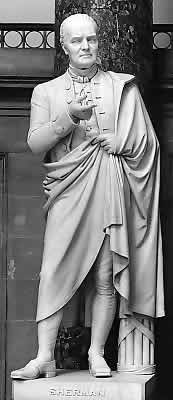
Roger Sherman Marble Statue
National Statuary Hall, U.S. Capitol
By Chauncey B. Ives
Therefore, Sherman played a major role in the development of the Constitution; although he admitted that the final document was not perfect, he nevertheless felt that it was the best that could have been produced at the time.
Many of the most notable figures of the revolution admitted a deep admiration for Roger Sherman and his work. From their notes, Sherman appears as a picture of New England pragmatism: stern, taciturn, spare with his words and very direct in his speech, but never hesitating to stand – and stand again – for his principles. Patrick Henry called Sherman one of the three greatest men at the Constitutional Convention. Thomas Jefferson credited Sherman with having “never said a foolish thing in his life.”
Sherman joined the fight for ratification of the new Constitution in Connecticut, enlisting support in a series of open letters to the citizens in the New Haven Gazette entitled To the People of Connecticut from A Countryman.
He stepped down as a Justice of Connecticut’s Superior Court to serve as a representative in the First United States Congress in 1789. There he advocated measures popular in New England: imposition of tariffs to protect local manufacturers, assumption of state debts by the federal government, and sale of western lands to finance the national debt. In 1791, he assumed fellow signer William Samuel Johnson’s seat in the U.S. Senate, where he served until his death.
Roger Sherman died of typhoid fever at his home on July 23, 1793, at the age of 72. He was still the mayor of New Haven and a member of the United States Senate at the time of his death. He is interred in Grove Street Cemetery in New Haven, near the Yale campus.
The self-educated frontier farmer, shoemaker, surveyor, lawyer, jurist, merchant, and landowner, a member of the committees that drafted the Declaration of Independence and the Articles of Confederation, chairman of the committee whose Connecticut Compromise created the bicameral (two house) structure of the United States Congress, Federalist pamphleteer in the ratification struggle, US Senator, was also one of the Founding Fathers of the United States of America.
Rebecca Minot Prescott Sherman also died in 1793.
SOURCES
Roger Sherman
National Statuary Hall
Bookrags: Rebecca Minot Prescott
Roger Sherman Biography
Rebecca Prescott Sherman
Teaching American History
Wikipedia: Roger Sherman
Roger Sherman 1721 – 1793
Biography of Roger Sherman
Roger Sherman: Connecticut
Wikipedia: Rebecca Minot Prescott
Biographical Sketch of Roger Sherman
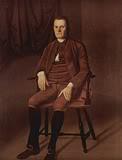

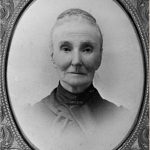

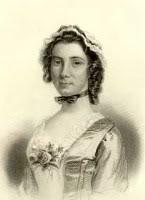
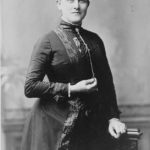
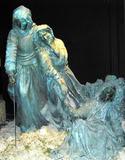
Wow this was supposed to be about the WIVES of important Historical figures am I correct, am I on the right page. What you said about her was correct her birth, marriage and death correct for the times. What you missed , without much online research might I say is the fact that she was the IT girl of the Wives of the Revolutionary Era. When Betsy Ross was making the flag , she went down to help/check it out for quality control, she also is shown sewing one of the stars on the flag in a famous painting of Betsy Ross. After the war , and Washington could breathe he invited all the signatories of the DOI for a party down in Mt. Vernon. Walking into the reception for dinner he asked Rebecca if he could have the pleasure of walking her on his arm . Allegedly Mrs. John Hancock said something aloud as to impropriety of it , Rebecca being married and all. At which point Washington replied tersely something very insulting about her looks and why she wasn’t on his arm. Needless to Say there are many pictures of her as well. This article does disservice to her by not even getting a picture let alone a word about her accomplishments . Roger Sherman already has so much. about him that what you wrote an 8th grader could do for a book report. Rebecca was my great great great ect…auntie and its kinda sad not to see her represented as her.